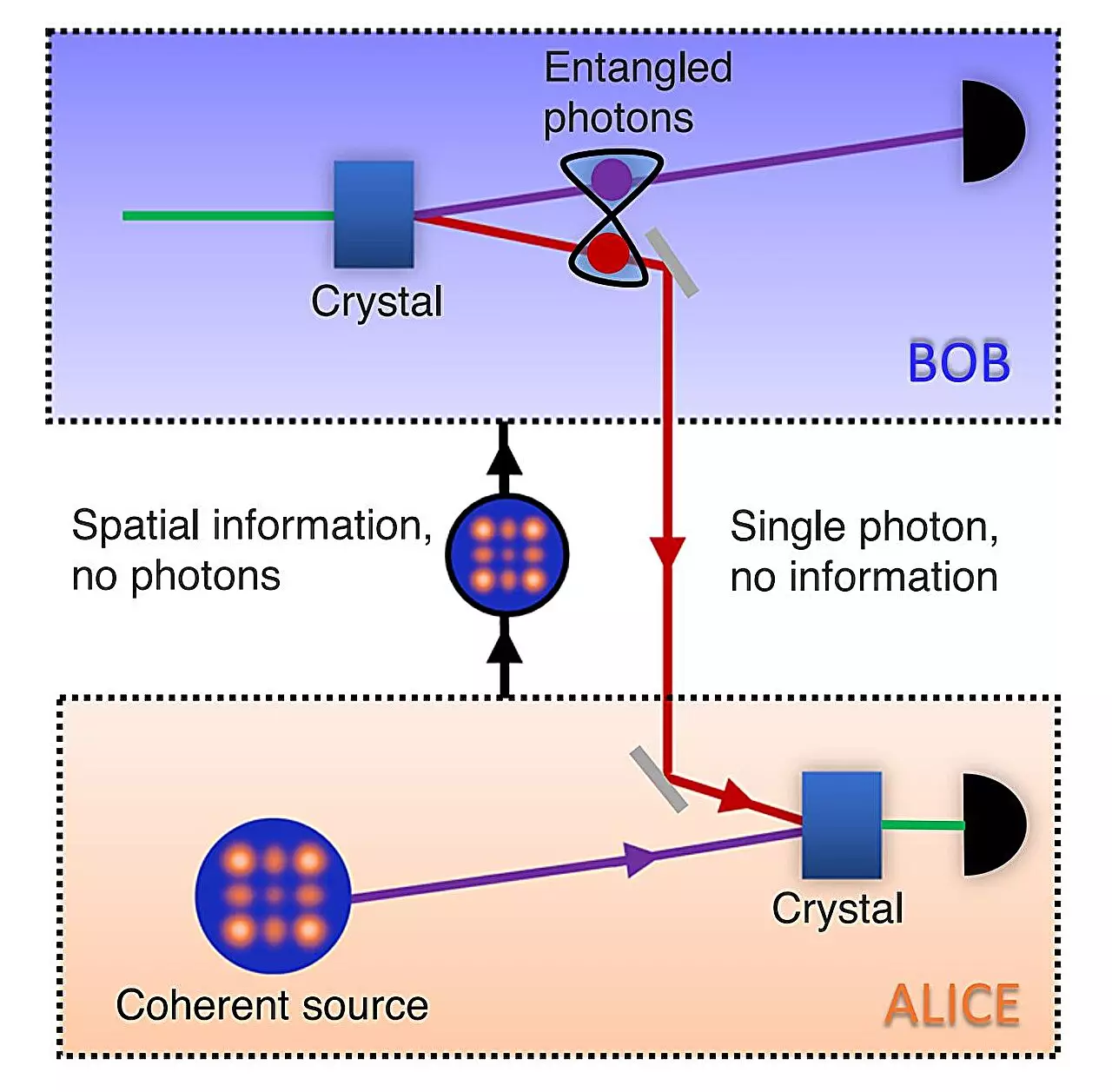The field of quantum communication has taken a significant leap forward with groundbreaking research published in Nature Communications by an international team from Wits and ICFO – The Institute of Photonic Sciences. The research showcases the teleportation-like transport of “patterns” of light, marking a crucial milestone towards achieving a quantum network for high-dimensional entangled states. This innovative approach allows for the transportation of images across a network without physically transmitting the image itself, revolutionizing the field of information security and quantum communication.
Quantum communication, especially over long distances, plays a vital role in ensuring information security. While communication between two parties in the quantum realm traditionally involves physically transmitting information, this recent research introduces the concept of teleportation of information. This newly proposed method, often likened to “Star Trek” technology, enables the sender to teleport information, eliminating the need for physical travel across the connection.
Previous teleportation experiments have been limited to three-dimensional states, requiring additional entangled photons to achieve higher dimensions. However, in this research, the team successfully demonstrated the first experimental quantum transport of high-dimensional states using only two entangled photons as quantum resources. The information appeared to be teleported from the sender to the receiver, marking an exciting advancement in the field.
The experimental breakthrough was made possible through the use of a nonlinear optical detector, which eliminates the need for additional photons while maintaining scalability for various patterns to be sent. The team reported a state-of-the-art achievement of 15 dimensions, with the potential for even higher dimensions. This groundbreaking achievement paves the way for quantum network connections with exceptional information capacity.
A practical application of this teleportation-like transport is illustrated through the scenario of a customer wishing to send sensitive information, such as a fingerprint, to a bank. In traditional quantum communication, the information must be physically sent, posing risks of interception. However, in the proposed quantum transport scheme, the bank sends a single photon (one of an entangled pair) with no information to the customer. The customer overlaps the photon with the desired information on a nonlinear detector, resulting in the information appearing precisely as if it had been teleported to the bank. With no physical transmission of information between the parties, interception becomes futile.
While the teleportation-like protocol is an exciting advancement, it currently relies on a bright laser beam to enhance the efficiency of the nonlinear detector. However, the research team envisions a future where a more efficient nonlinear detector may make teleportation a reality. Despite this limitation, the experiment’s success opens new avenues for connecting quantum networks, emphasizing the significance of nonlinear quantum optics as a valuable resource.
Dr. Adam Vallés from ICFO (Barcelona) expresses hope that this successful experiment motivates the nonlinear optics community to further advance quantum implementation. It is crucial, however, to address the potential for a cheating sender to retain copies of the information, leading to multiple unintended teleportations. As the technological feasibility of the process is demonstrated, the configuration can be used to establish a high-dimensional secure channel for quantum communications between two parties. Dr. Bereneice Sephton from Wits University is highly commended for her determination and comprehensive skill set that contributed to this groundbreaking experiment.
With this initial success, the research team plans to continue their work in the field of quantum communication. Their next endeavor will focus on quantum transport across an optical fiber network, hoping to achieve further milestones through ongoing dedicated research.
The pioneering research in teleportation-like transport of photonic patterns opens up new horizons in the field of quantum communication. By eliminating the need for physical transmission of information, this breakthrough offers enhanced security and higher information capacity. As researchers strive to overcome existing limitations and explore future possibilities, quantum communication approaches the realm of science fiction and promises a bright future for secure and efficient information transfer.


Leave a Reply